As Trump threatens more tariffs, how could they affect construction?
11 February 2025
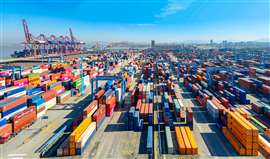 Beilun Port District, Port of Ningbo, Zhejiang Province, China (Image: Weiming via AdobeStock - stock.adobe.com)
Beilun Port District, Port of Ningbo, Zhejiang Province, China (Image: Weiming via AdobeStock - stock.adobe.com)
Construction executives around the US, not to mention suppliers and manufacturers in Canada and Mexico, may well have felt that they dodged a bullet last week.
US President Donald Trump seemed set on imposing 25% tariffs on Canada and Mexico until announcing last-minute deals with both countries that triggered a 30-day suspension of the plans.
The US did impose the 10% on a wide range of Chinese goods, as it had threatened that it would.
And there could well be more to come – by Monday this week, we learned that Trump is now threatening a 25% import tariff on steel and aluminium tariffs to the US.
So what are the likely effects on the price and flow of goods used in the US construction industry as a result of the tariffs on China. And what could the effect of tariffs on Canada and Mexico – still a possibility – be?
Knock-on effects for materials prices
Trump’s apparent determination to proceed with tariffs on Canada and Mexico – something that many had assumed was a mere negotiating tactic – left companies scrambling to understand the implications last week says Ian Wilson, a senior analyst at supply chain risk management specialist Everstream Analytics.
“The most shocking thing, I think for everyone, was that the tariffs [on Canada and Mexico] were on the verge of being implemented,” he says.
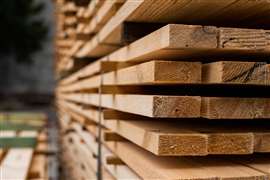 Image: Volodymyr via AdobeStock - stock.adobe.com
Image: Volodymyr via AdobeStock - stock.adobe.com
Everstream Analytics works with a number of construction equipment manufacturers and building materials suppliers in the US and the news caught many in the industry off-guard. “In the construction industry, in the United States at least, there isn’t really a quick alternative to what we are sourcing from Canada and Mexico and that definitely caught everyone a little bit by surprise,” he says.
The US imports a significant amount of soft wood from Canada for use in the construction industry, he says. Fears over what tariffs could do to prices of lumber was certainly a major concern among US housebuilders.
The National Association of Home Builders (NAHB) estimates that $184 billion worth of goods were used in new multifamily and single-family housing in 2023. Around $13 billion of those goods were imported from outside the US.
Particularly significant were sawmill and wood products imported from Canada. The NAHB said that $8.5 billion worth of these products were imported to the US in 2023, of which nearly 70% crossed over from its northern neighbour. These imports were already subject to 14.5% anti-dumping duties. Additional tariffs would have seen that figure rise to nearly 40%.
Meanwhile, Wilson points out that the quantity of drywall products imported into the US from Mexico is also significant. Of the $456 million worth of lime and gypsum products imported into the US in 2023, 71% came from Mexico, according to the NAHB.
But even if the suspension of 25% blanket tariffs on Canada and Mexico holds, they still haven’t entirely escaped Trump’s blizzard of threats just yet. That is because both countries would also be affected by the 25% tariffs on all steel and aluminium imported into the US.
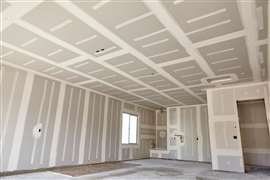 Image: 1jaimages via AdobeStock - stock.adobe.com
Image: 1jaimages via AdobeStock - stock.adobe.com
It wouldn’t be the first time Trump had imposed such tariffs. During his first term, he put 25% on steel imports and 10% on aluminium from Canada, Mexico and the European Union, before reaching a deal a year later to end tariffs on Canada and Mexico.
In 2018, global cost and project management firm Currie & Brown found that after three months of tariffs, domestic steel producers increased their prices in the face of less competitive imports, raising costs for US construction firms. Roughly a quarter of all steel used in the US is imported. Some 40% of that came from Canada and Mexico combined. Chinese steel makes up only about 1.8% of steel imported to the US, according to Reuters. New tariffs, set to come into effect on 12 March, could spark greater price volatility that requires construction firms to plan more efficiently.
Other products of note that will attract increased tariffs are certain finished goods coming from China like solar panels and other appliances, says Wilson.
“I don’t think there’s a lot of scenarios in which implementing these tariffs on China and then on Canada and Mexico is going to reduce costs for any industries moving forwards,” says Wilson.
Uncertainty could spike demand
But even without the imposition of blanket tariffs on Canada and Mexico, Wilson expects other effects from the uncertainty that prevailed last week and this week with the news of steel tariffs. “I think we need to watch out for a small spike in demand. Back in November last year, you had all these companies trying to get imports into the US before Trump took office. I wonder if this 30-day grace period will have a similar effect. You could see transportation rates spike for getting goods across the border and there will be short-term increased demand.
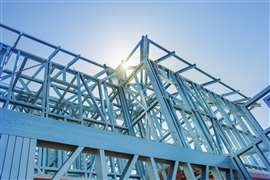 Image: Lev via AdobeStock - stock.adobe.com
Image: Lev via AdobeStock - stock.adobe.com
“I think everyone is going to be trying to front load a little bit more on materials to avoid uncertainty around tariffs.”
Dr Nicholas Fearnley, head of global construction at Oxford Economics, agreed that the main impact of tariffs would be increased costs. But he adds that even if the US were to proceed with tariffs on Canada and Mexico after the 30-day “pause”, then their profile could change.
“If the tariffs are imposed following the delay agreement, we are likely to start seeing exemptions (such as on lumber) so the effective tariff rate reduces before the eventual renegotiation of the United States-Mexico-Canada Agreement (USMCA) in 2026,” he tells Construction Briefing.
“Since I don’t think these tariffs will necessarily be permanent, it is difficult to see them driving a structural change on the materials used by the construction industry. Having said this, our trade team plans to do deep dive into the impact of announced (and expected) tariffs on our trade forecasts which will give us more detail on the impact on construction supply chains.”
Nonetheless, he warns that the uncertainty created since the start of this month could see companies slow down investment decisions. The Fed could also delay some of the expected interest rate cuts if further tariffs are imposed, which will weigh on the rebound in US construction activity, he contends. The impact of tariffs in Canada on costs and disposable incomes could slow a rebound in residential activity there too.
Impact on construction equipment
As far as the cost and availability of construction machinery is concerned, tariffs are likely to have certain effects but won’t necessarily affect underlying demand, says Off-Highway Research’s Chris Sleight.
He agrees that tariffs are, in general, inflationary. “There are some interesting lessons from history around tariffs. Trade is a two-way street and if the US starts putting tariffs on China, then China will start putting tariffs on US exports. When walls go up, things escalate and trade grinds to a halt as a result.”
Nonetheless, they are a “theoretical” concern as far as the overall level of construction machinery sales are concerned, he asserts.
“What tariffs do will be to push manufacturers to make different decisions about their global footprints,” he says. “Most manufacturers in this industry manufacture in more than one region. For the last eight years, there has been a lot of focus on US-China relations and the tariffs on China that have been in place since 2020 have encouraged companies to set up manufacturing in Mexico.
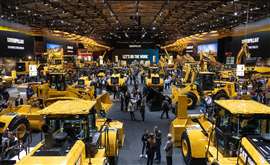 Cat’s CEO Jim Umpleby struck a confident tone on the issue of tariffs
Cat’s CEO Jim Umpleby struck a confident tone on the issue of tariffs
“Trump’s attitude seems to be that if you want to sell a manufactured product in the USA, then you probably have to make it in the USA. Anything manufactured outside will probably be subject to some sort of tariff unless there is no US manufacturer at all,” Sleight adds.
What tariffs mean for construction equipment is that in general, manufacturers will simply switch production to other countries that don’t attract tariffs, Sleight says. “Tariffs on certain products that heralded from China have now moved production to India,” he notes, as an example.
Having that level of flexibility means that Off-Highway Research’s expectations for the number of units of construction equipment sold around the world remain largely unaffected, at least for now.
Caterpillar CEO Jim Umpleby certainly seemed relatively sanguine about tariffs when he discussed the issue with investors earlier this month, buoyed by the knowledge that Cat retains extensive US manufacturing capabilities.
“We are a global manufacturer but our largest manufacturing presence is in the United States and we are a net exporter outside of the US. That positions us pretty well against many other companies out there,” said Umpleby earlier this month.
There is, of course, also the question of what happens when a machine is assembled in a given location like the US but contains parts and components that have been shipped from elsewhere in the world, whether it is China, Mexico, Canada, or some other location.
What effect could tariffs have here? “You are going to see the biggest spike in cost on construction machinery that finishes assembly of a machine in a factory in [somewhere like] Mexico and then exports it to the US, says Wilson. “Input impacts in that scenario are more likely than on the kind of business model where you are in a US-based facility that is sourcing parts from different countries.”
Nonetheless, he does consider it a possibility that certain high-tech components from a country like China could start to become scarcer, if not because of tariffs then because of security concerns. “With some of the more advanced pieces of agricultural or construction machinery that rely on complicated sensors or geo-positioning to execute their tasks, those types of components may not see a huge cost increase but they could just eventually become difficult to source because of national security concerns,” he says.
Getting prepared
Amid all the uncertainty around where US policy on tariffs goes from here, Wilson advises construction companies and their suppliers to establish as much visibility of their supply chains as possible.
“You might understand who your primary supplier for a certain component or material is. But it is harder to understand who the second, third, or fourth tier is from there. That’s where sometimes these tariffs can have uncertain effects. In the worst-case scenario, you could lose a material or component you are sourcing from someone or you could get sudden notice of a cost increase because your supplier is bearing additional costs.
“Understanding who the sub-tier suppliers are, mapping them out, and knowing what they are exposed to is key.”
On top of that, he adds, is staying on top of the daily breaking news events coming out of the new US administrations. And on that front, it seems likely that more surprises are yet to come.
CONNECT WITH THE TEAM





